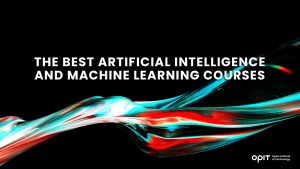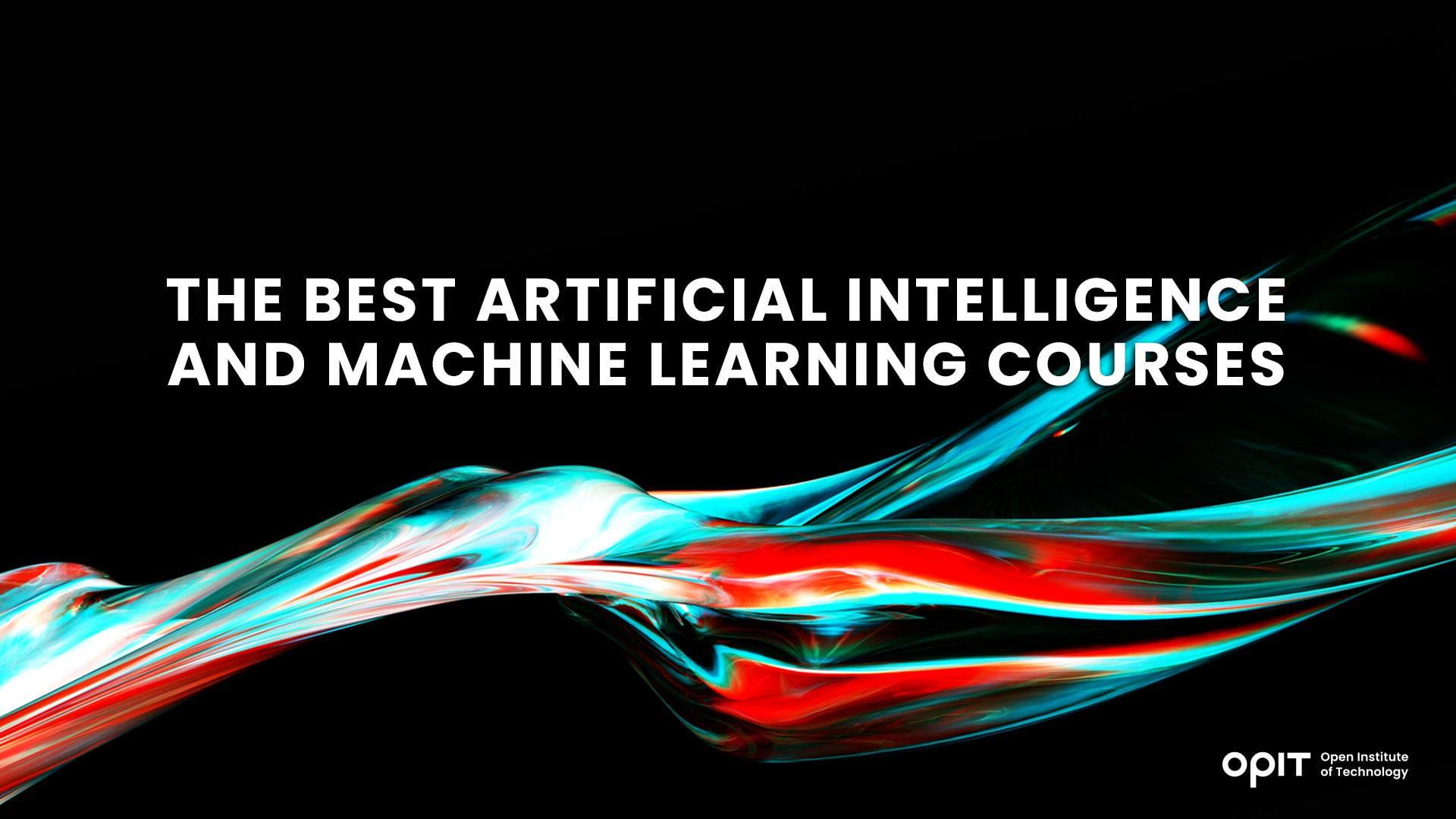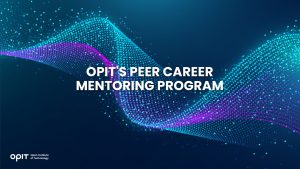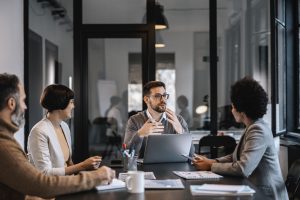

Every time you’ve chatted with a bot on a website, you’ve seen the basis of artificial intelligence (AI) and machine learning (ML) in action. Your experiences with augmented reality, any prompts you’ve ever delivered to ChatGPT, and a host of other technologies that businesses are already leveraging show us how crucial these two fields are, both today and in the future.
AI and ML are taking over the world. And with the right AI & ML courses, you put yourself in the ideal position to forge a career in an industry that’s set for a continuous annual growth rate of 36.2% between 2023 and 2030.
Factors to Consider When Choosing an AI and ML Course
AI ML courses come in all shapes and sizes, with some delivering the basics you need to build a foundation in the subjects and others moving on from those foundational concepts and into specializations. These five things are your biggest considerations when choosing a course.
1 – Course Content and Curriculum
What does the course teach? That’s not just an important question in terms of figuring out if the course helps you develop the skills you need, but it’s a crucial one for your future career prospects. The curriculum informs every step you take on your learning journey. If the content isn’t up to scratch (or takes you in a different direction than the one you intend to go in) it’s not the course for you.
2 – Course Duration and Flexibility
Combine work and family with your personal life and existing educational commitments and you have the recipe for a quagmire of time-consuming tasks that may not fit with a long-term course. The best AI and ML courses online offer flexibility, allowing you to fit your studies around other commitments and opening the door to self-paced learning.
3 – Your Instructors
Imagine you walk into a classroom and your instructor introduces themself. They tell you they have a couple of qualifications in the fields of AI and ML, but they haven’t worked in either industry and can’t expose you to professionals who have. Is that any use to you in your career? A good instructor combines technical expertise (which they’ll need a lot of) with industry experience they can draw on to lead you down the right career path.
4 – Course Reviews and Ratings
As any online marketer will tell you, user-generated content in the form of reviews, social media posts, and simple ratings tells you a ton about what a product delivers. That’s as true for AI and machine learning courses as it is for anything else. Check out what other people have to say about the course, paying special attention to former students and what’s happened to them in the wake of earning their certification.
5 – Pricing and Affordability
Money is always a challenge when it comes to education. Some universities charge tens of thousands of euros for their courses, which is fine if you can commit time and money to a full-time educational experience. It’s not so fine if you’re working on a budget. Your course’s cost plays a huge role in determining whether you take it. Just remember one thing – people tend to get what they pay for (for better or worse).
Top AI and ML Online Courses
Machine learning and artificial intelligence courses run the gamut from fast, industry-led courses designed to get you into a job to deeper degrees designed to equip you with everything you need to advance in your career. The following four are some of the best AI and ML courses online.
Course 1 – Master in Applied Data Science & AI (OPIT)
Designed for those at the postgraduate level, this Master’s degree requires you to have a background in computer science (or a relevant alternative). It’s a 100% online course that delivers an accredited degree under the European Qualification Framework (EQF), with the course also counting toward the college credits you may need to apply for future courses. Tutors are available for direct learning 24/7 and you learn via both recorded and live content delivered over the web.
Key Features and Benefits
- Offers tons of exposure to how machine learning and artificial intelligence apply in real-world scenarios
- You get a Master’s degree from a fully-accredited institution
- Favors progressive assessments over high-stress exams
- Control your own learning by arranging the course’s modules around your schedule
Enrollment Details
OPIT’s Master in Applied Data Science & AI comes in two flavors – the regular 18-month variety and a fast-tracked 12-month course. Enrollment is annual, with intake occurring every October, and the price varies depending on when you apply. Early birds get an extensive discount, paying €4,950 compared to the regular price of €6,500. You’ll need a relevant Bachelor’s degree in a subject like computer science to apply.
Course 2 – Machine Learning Introduction for Everyone (IBM via Coursera)
If OPIT’s Master’s degree is for people who are already halfway through the metaphorical marathon of machine learning and AI, IBM’s beginner’s course is for those at the starting line. It’s a seven-hour course that teaches the basics of AI and ML, in addition to helping you get to grips with the development cycle for a machine learning model. As a primer for the concepts, it’s one of the best AI ML online courses available.
Key Features and Benefits
- Provided by a Fortune 50 company that’s one of the leaders in the AI field
- Created by a Senior Data Scientist who currently works for IBM
- You receive a sharable certificate that looks great on your LinkedIn profile
- No completion of other AI machine learning courses is required to apply
Enrollment Details
“Free” is always a nice price tag to see on anything, and that’s what you get with this course, at least when trialing the course. Enrolment is semi-regular, with batches of students accepted every few months, and you get to reset deadlines based on when you can complete its modules. IBM says the course contains seven hours of content. Your experience may vary depending on how quickly (or otherwise) you adapt to the content.
Course 3 – Post Graduate Program in AI and Machine Learning (Purdue University)
Career Karma ranks this as one of the best AI ML courses online, and it’s hard to argue given that this is a near-year-long course offered with backing from industry professionals at IBM. It’s more bootcamp than formal course, though, so expect to be put through your paces with intensive hackathons and sprints that cover a huge number of AI tools. Combine that with real-world projects (using datasets from companies like Twitter and Uber) and you have a fast-paced and valuable course.
Key Features and Benefits
- Any extremely modern curriculum that takes in real-world examples from tech industry giants
- Backed by IBM to further the real-world experience delivered
- You receive a postgraduate certificate from an established university
- The online bootcamp experience is great for people who prefer fast-paced and intensive learning
Enrollment Details
Enrollment is set for May of each year, with the course lasting for 11 months thereafter. You’ll need to hit some criteria to apply. The course asks for a minimum of a Bachelor’s degree where you’ve obtained at least 50% on your modules, as well as a couple of years of work experience. That work experience requirement may be an issue for people who haven’t started their careers. Still, it’s a cost-effective program, with the course costing £2,990 (approx. €3,400).
Course 4 – Machine Learning Crash Course (Google AI)
If time is of the essence and you just want a crash course in what machine learning is and how it applies to your business, Google provides the answer with this option. At just 15 hours, it’s a course you can complete over an intensive weekend of study. It’ll introduce you to some real-world case studies, with lectures coming directly from industry heads at Google.
Key Features and Benefits
- Contains 25 lessons (with 30 exercises) to expand and test your knowledge
- Get industry insight from Google experts who work in the AI and ML fields
- You don’t have to pay a euro to take part in this course
- Includes interactive visualizations of real-world models that are great for tinkerers
Enrollment Details
Google presumes no prior knowledge of machine learning in this course, though it recommends that you’re comfortable with programming in Python and understand complex statistical concepts. Knowledge of the NumPy library is especially helpful. Assuming you build up a knowledge base (Google offers other courses to cover these foundations), you can enroll at any time and get a free course that you can fit around your schedule.
Additional Resources for AI and ML Learning
Great AI ML courses can teach you the fundamentals and offer direct experience, ideally coming from professionals in the industry. But it’s what you do outside of your formal and certified studies that can make the biggest difference to your career prospects. These additional resources both supplement what you learn from the above courses and allow you to continue developing your skills once you have your shiny new certificate:
- Online forums and communities
- Podcasts and YouTube channels dedicated to machine learning and AI
- Books and eBooks
- Conferences, workshops, and career-centric bootcamps
Use AI & ML Courses Today to Benefit Tomorrow
Consider these facts if you need any more convincing that AI and machine learning courses are right for you. The average machine learning engineer earns between €66,585 and €118,169 per year, with jobs in AI easily climbing into the six-figure range as well. Your career prospects get a boost when you study AI and ML. But remember – a certification alone is not enough.
These are fast-evolving fields, and only those who dedicate themselves to continued learning (and the adaptation that comes with market changes) excel. Start your journey with one of the four courses in this article and then continue down the educational path.
Related posts

Source:
- Raconteur, published on November 06th, 2025
Many firms have conducted successful Artificial Intelligence (AI) pilot projects, but scaling them across departments and workflows remains a challenge. Inference costs, data silos, talent gaps and poor alignment with business strategy are just some of the issues that leave organisations trapped in pilot purgatory. This inability to scale successful experiments means AI’s potential for improving enterprise efficiency, decision-making and innovation isn’t fully realised. So what’s the solution?
Although it’s not a magic bullet, an AI operating model is really the foundation for scaling pilot projects up to enterprise-wide deployments. Essentially it’s a structured framework that defines how the organisation develops, deploys and governs AI. By bringing together infrastructure, data, people, and governance in a flexible and secure way, it ensures that AI delivers value at scale while remaining ethical and compliant.
“A successful AI proof-of-concept is like building a single race car that can go fast,” says Professor Yu Xiong, chair of business analytics at the UK-based Surrey Business School. “An efficient AI technology operations model, however, is the entire system – the processes, tools, and team structures – for continuously manufacturing, maintaining, and safely operating an entire fleet of cars.”
But while the importance of this framework is clear, how should enterprises establish and embed it?
“It begins with a clear strategy that defines objectives, desired outcomes, and measurable success criteria, such as model performance, bias detection, and regulatory compliance metrics,” says Professor Azadeh Haratiannezhadi, co-founder of generative AI company Taktify and professor of generative AI in cybersecurity at OPIT – the Open Institute of Technology.
Platforms, tools and MLOps pipelines that enable models to be deployed, monitored and scaled in a safe and efficient way are also essential in practical terms.
“Tools and infrastructure must also be selected with transparency, cost, and governance in mind,” says Efrain Ruh, continental chief technology officer for Europe at Digitate. “Crucially, organisations need to continuously monitor the evolving AI landscape and adapt their models to new capabilities and market offerings.”
An open approach
The most effective AI operating models are also founded on openness, interoperability and modularity. Open source platforms and tools provide greater control over data, deployment environments and costs, for example. These characteristics can help enterprises to avoid vendor lock-in, successfully align AI to business culture and values, and embed it safely into cross-department workflows.
“Modularity and platformisation…avoids building isolated ‘silos’ for each project,” explains professor Xiong. “Instead, it provides a shared, reusable ‘AI platform’ that integrates toolchains for data preparation, model training, deployment, monitoring, and retraining. This drastically improves efficiency and reduces the cost of redundant work.”
A strong data strategy is equally vital for ensuring high-quality performance and reducing bias. Ideally, the AI operating model should be cloud and LLM agnostic too.
“This allows organisations to coordinate and orchestrate AI agents from various sources, whether that’s internal or 3rd party,” says Babak Hodjat, global chief technology officer of AI at Cognizant. “The interoperability also means businesses can adopt an agile iterative process for AI projects that is guided by measuring efficiency, productivity, and quality gains, while guaranteeing trust and safety are built into all elements of design and implementation.”
A robust AI operating model should feature clear objectives for compliance, security and data privacy, as well as accountability structures. Richard Corbridge, chief information officer of Segro, advises organisations to: “Start small with well-scoped pilots that solve real pain points, then bake in repeatable patterns, data contracts, test harnesses, explainability checks and rollback plans, so learning can be scaled without multiplying risk. If you don’t codify how models are approved, deployed, monitored and retired, you won’t get past pilot purgatory.”
Of course, technology alone can’t drive successful AI adoption at scale: the right skills and culture are also essential for embedding AI across the enterprise.
“Multidisciplinary teams that combine technical expertise in AI, security, and governance with deep business knowledge create a foundation for sustainable adoption,” says Professor Haratiannezhadi. “Ongoing training ensures staff acquire advanced AI skills while understanding associated risks and responsibilities.”
Ultimately, an AI operating model is the playbook that enables an enterprise to use AI responsibly and effectively at scale. By drawing together governance, technological infrastructure, cultural change and open collaboration, it supports the shift from isolated experiments to the kind of sustainable AI capability that can drive competitive advantage.
In other words, it’s the foundation for turning ambition into reality, and finally escaping pilot purgatory for good.

The Open Institute of Technology (OPIT) is the perfect place for those looking to master the core skills and gain the fundamental knowledge they need to enter the exciting and dynamic environment of the tech industry. While OPIT’s various degrees and courses unlock the doors to numerous careers, students may not know exactly which line of work they wish to enter, or how, exactly, to take the next steps.
That’s why, as well as providing exceptional online education in fields like Responsible AI, Computer Science, and Digital Business, OPIT also offers an array of career-related services, like the Peer Career Mentoring Program. Designed to provide the expert advice and support students need, this program helps students and alumni gain inspiration and insight to map out their future careers.
Introducing the OPIT Peer Career Mentoring Program
As the name implies, OPIT’s Peer Career Mentoring Program is about connecting students and alumni with experienced peers to provide insights, guidance, and mentorship and support their next steps on both a personal and professional level.
It provides a highly supportive and empowering space in which current and former learners can receive career-related advice and guidance, harnessing the rich and varied experiences of the OPIT community to accelerate growth and development.
Meet the Mentors
Plenty of experienced, expert mentors have already signed up to play their part in the Peer Career Mentoring Program at OPIT. They include managers, analysts, researchers, and more, all ready and eager to share the benefits of their experience and their unique perspectives on the tech industry, careers in tech, and the educational experience at OPIT.
Examples include:
- Marco Lorenzi: Having graduated from the MSc in Applied Data Science and AI program at OPIT, Marco has since progressed to a role as a Prompt Engineer at RWS Group and is passionate about supporting younger learners as they take their first steps into the workforce or seek career evolution.
- Antonio Amendolagine: Antonio graduated from the OPIT MSc in Applied Data Science and AI and currently works as a Product Marketing and CRM Manager with MER MEC SpA, focusing on international B2B businesses. Like other mentors in the program, he enjoys helping students feel more confident about achieving their future aims.
- Asya Mantovani: Asya took the MSc in Responsible AI program at OPIT before taking the next steps in her career as a Software Engineer with Accenture, one of the largest IT companies in the world, and a trusted partner of the institute. With a firm belief in knowledge-sharing and mutual support, she’s eager to help students progress and succeed.
The Value of the Peer Mentoring Program
The OPIT Peer Career Mentoring Program is an invaluable source of support, inspiration, motivation, and guidance for the many students and graduates of OPIT who feel the need for a helping hand or guiding light to help them find the way or make the right decisions moving forward. It’s a program built around the sharing of wisdom, skills, and insights, designed to empower all who take part.
Every student is different. Some have very clear, fixed, and firm objectives in mind for their futures. Others may have a slightly more vague outline of where they want to go and what they want to do. Others live more in the moment, focusing purely on the here and now, but not thinking too far ahead. All of these different types of people may need guidance and support from time to time, and peer mentoring provides that.
This program is also just one of many ways in which OPIT bridges the gaps between learners around the world, creating a whole community of students and educators, linked together by their shared passions for technology and development. So, even though you may study remotely at OPIT, you never need to feel alone or isolated from your peers.
Additional Career Services Offered by OPIT
The Peer Career Mentoring Program is just one part of the larger array of career services that students enjoy at the Open Institute of Technology.
- Career Coaching and Support: Students can schedule one-to-one sessions with the institute’s experts to receive insightful feedback, flexibly customized to their exact needs and situation. They can request resume audits, hone their interview skills, and develop action plans for the future, all with the help of experienced, expert coaches.
- Resource Hub: Maybe you need help differentiating between various career paths, or seeing where your degree might take you. Or you need a bit of assistance in handling the challenges of the job-hunting process. Either way, the OPIT Resource Hub contains the in-depth guides you need to get ahead and gain practical skills to confidently move forward.
- Career Events: Regularly, OPIT hosts online career event sessions with industry experts and leaders as guest speakers about the topics that most interest today’s tech students and graduates. You can join workshops to sharpen your skills and become a better prospect in the job market, or just listen to the lessons and insights of the pros.
- Internship Opportunities: There are few better ways to begin your professional journey than an internship at a top-tier company. OPIT unlocks the doors to numerous internship roles with trusted institute partners, as well as additional professional and project opportunities where you can get hands-on work experience at a high level.
In addition to the above, OPIT also teams up with an array of leading organizations around the world, including some of the biggest names, including AWS, Accenture, and Hype. Through this network of trust, OPIT facilitates students’ steps into the world of work.
Start Your Study Journey Today
As well as the Peer Career Mentoring Program, OPIT provides numerous other exciting advantages for those who enroll, including progressive assessments, round-the-clock support, affordable rates, and a team of international professors from top universities with real-world experience in technology. In short, it’s the perfect place to push forward and get the knowledge you need to succeed.
So, if you’re eager to become a tech leader of tomorrow, learn more about OPIT today.
Have questions?
Visit our FAQ page or get in touch with us!
Write us at +39 335 576 0263
Get in touch at hello@opit.com
Talk to one of our Study Advisors
We are international
We can speak in:


